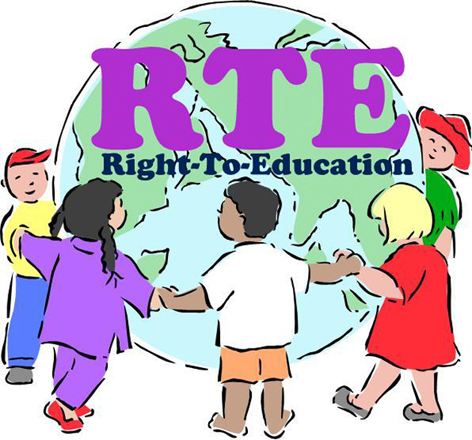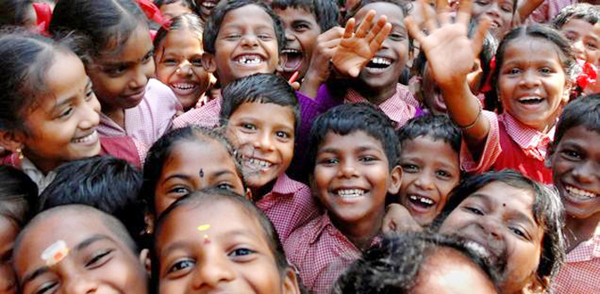 India is all set to witness a different kind of class war as the Supreme Court has upheld the 25 per cent reservation for children from economically weaker sections (EWS) in private schools. Already some schools have reluctantly implemented this reservation under the Right to Education Act-2009. Others challenged it in the court. Now that the apex court has upheld the constitutionality of this quota, all private schools will have to admit poor children against 25 per cent of their total seats.
India is all set to witness a different kind of class war as the Supreme Court has upheld the 25 per cent reservation for children from economically weaker sections (EWS) in private schools. Already some schools have reluctantly implemented this reservation under the Right to Education Act-2009. Others challenged it in the court. Now that the apex court has upheld the constitutionality of this quota, all private schools will have to admit poor children against 25 per cent of their total seats.
The Right to Education has been welcomed widely but for this provision of reservation. Most of the commentators think that this is a retrograde step as it will amount to the government imposing a burden on private schools. The government is going to reimburse only a part of the cost to the private schools. Then there is the question of poor children's difficulty in coping with the learning environment in elite schools. The commentators have also pointed out that the government has not been really addressing the core issue, which is improving the lot of government schools where a majority of the poor children study.
These criticisms are valid. As the dissenting Judge in the Supreme Court bench that upheld the Act has stated the government should not outsource its obligation towards free and compulsory education to the private sector after making education a fundamental right. True. When it is seen merely as an instrument of increasing the poor people’s access to education the idea of reservation for EWS students in private schools is replete with myriad problems. However, this measure is not about the question of access alone. It is also an instrument of promoting the much-needed diversity in class rooms. Therefore, the reservation provision should not be attacked merely because it imposes a burden on the private sector. It is possible to find solutions to the problems that are likely to crop up for the private schools on account of this. The real problem with the provision is that it is too little to promote diversity in schools. That does not mean that the quantum of reservation for EWS children should go up. The real issue here is that the government should make richer children go to government schools, not by coercion but by improving the lot of government schools which are now considered as the last resort of the children of the have-nots.
In a country like India education should help bridge divides. However, the present education system in which there is an informal segregation of schools based on the socio-economic status of students, education cannot bridge divides. Instead it will accentuate the existing class-based divide and sometimes even create some fresh divides. The social intermixing that happens inside the class room can teach valuable lessons to children about each other’s strengths and problems. By allowing only one class of students to a particular kind of schools, the present system is shutting off their students from the realities that those who do not belong to a different socio-economic class face. This monoculture is dangerous. If the future planners, thinkers, scientists and entrepreneurs have no idea of the realities of life for those who are not as privileged as they are, it will lead to an unimaginable kind of social tension. This has begun to happen already.

The real value of the 25 per cent reservation lies in addressing this problem. But it is inadequate because it promises to promote social inter-mixing of students only in private schools which are fewer in number and cater to a smaller proportion of total student population. If every school is to mirror the diversity, then government schools should also attract students from diverse socio-economic backgrounds. In simple words, rich kids should go to government schools. However, as long as the government schools are kept in the abysmal state in which they are at present, one cannot expect the richer parents to send their children to these schools. Unfortunately, social science theories tell us that the public services are unlikely to improve unless the rich and powerful have a stake in them. This means unless there is pressure from those who have “voice” (read the richer parents), the government schools will not improve. But unless the government schools improve, those with “voice” will not send their children to such schools. This then becomes a chicken and egg situation. The greatest challenge that the government is going to face is one of breaking this vicious cycle.
It may not be correct to say that all private schools cater to only rich kids and that all private schools are better than government schools. Even the poorer families which are slightly better off now prefer to send their children to private schools. The private schools catering to these sections are often worse than the government schools. Yet these families send their children to the so-called private schools by making great sacrifices because private schools in India also mean English-medium education. The poor see English medium as a passport to a better future whereas in a number of states the government schools offer education in the medium of the local language. These state governments are in a great confusion. They conflate the preservation of local culture with the medium of instruction in government schools. If the governments continue this policy of medium of instruction, then the government will have a much greater challenge of proving it to the aspiring parents from the poorer sections that the government schools are better for their children irrespective of the medium of instruction. If the government does not wake up to this challenge then the poor will continue to suffer substandard education, no matter whether it is public or private. Education as a fundamental right will remain a beautiful piece of legislation having been implemented only in its letter and not spirit.
Unfortunately, there is no clear indication of how the government is going to address some of these issues along with many others that the Act has thrown up. As things stand, one cannot predict with any precision the kind of changes that the historic move of making education a fundamental right will usher in. For the foreseeable future, things will be in a state of mess and confusion. The constraint is not going to be financial although it is made to look like that. The real constraint will be lack of state capacity in the face of a multiplicity of ideology-driven ideas. The promise of an impending revolution in education sector looks beautiful but like all revolutions this one also may make things worse before they get any better.
The writer is a member of the faculty of social sciences at a university in Bangalore







Comments
Add new comment